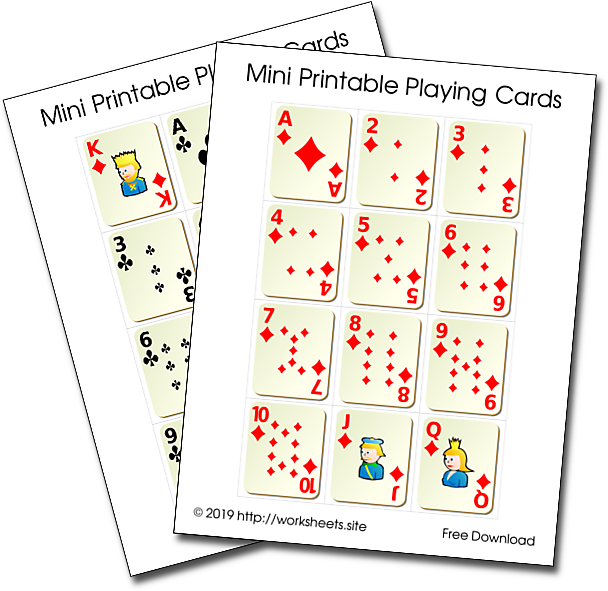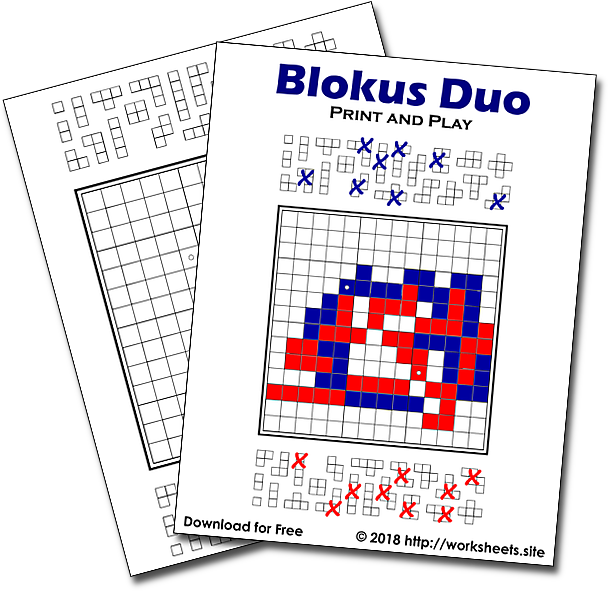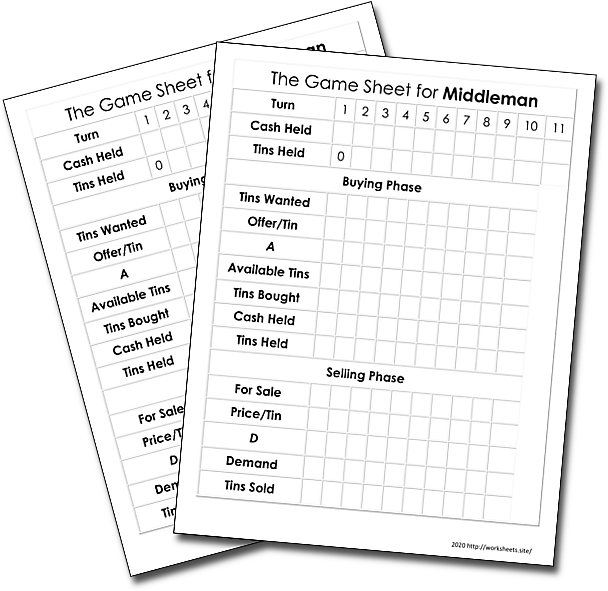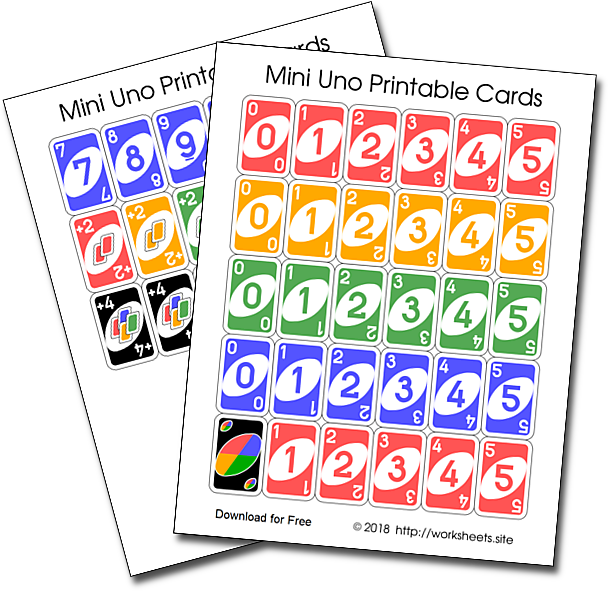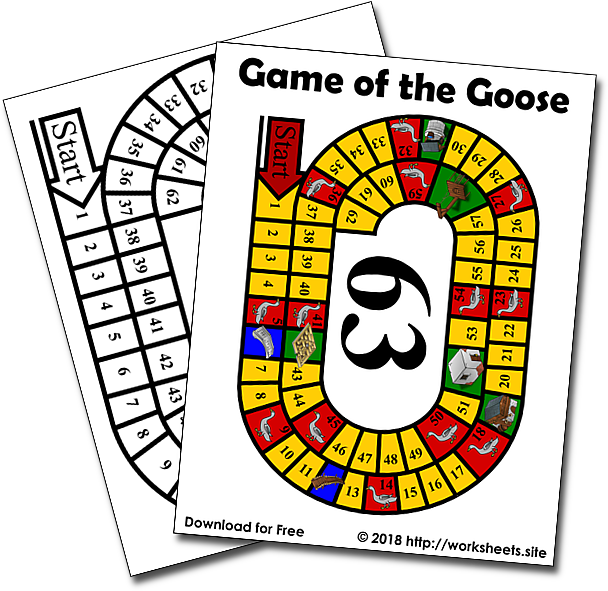Printable Playing Card Sheets PDF
1. Mathematical Card Games
Card games can be used to reinforce mathematical concepts like less than, greater than, addition, subtraction, multiplication, division, fractions, negative numbers, absolute value, and problem solving.
Playing cards are very popular in children environments, and they are even taken to school for play in their spare time.
You will need several decks of mathematical cards. Do not rush to look for them in the school store or try to order them through your favorite catalog. Mathematical cards are normal cards with the J, Q, K and wild cards removed.
Make a deck of cards for each player. A mathematical deck contains 40 cards, so a single game of Addition Wars allows the child to solve 20 problems, and he hears his opponent solve 20 more, and if your children are like mine, they are unlikely to want to stop the game at the end with the letters
While your students memorize the arithmetic results, they may need extra practice with those that are more difficult like 6 × 8. However, with a regular deck, I have seen that too many easy problems appear, like 1 × 9 or 2 × 7. To offer a bigger challenge for older children, make a double deck of cards for each player, but remove the aces, twos, and tens. This gives each player decks of 56 cards with the most challenging problems.
You can download this set of printable playing cards through this PDF ![[PDF Document]](innards/pdf.png) file. Use the password worksheets.site to open the PDF.
file. Use the password worksheets.site to open the PDF.
Table of Contents
2. Basic War
Each player takes a deck of cards, all face down, and reveals a card. The player with the highest number wins the battle, placing the card and the captured cards in the prisoners' pile. Whenever there is a tie for the higher card, all the players battle: each player draws three covered cards and one uncovered one. The largest of these new uncovered cards captures everything on the table. Since all the players participate, someone who had a low card in the first match could, in the end, win the battle. If a draw occurs again, the battle pattern of 3 covered and 1 uncovered card is repeated until someone breaks the tie. The player who wins the battle captures all the cards played that turn.
This is an old classic children's game. It amazes me how such simple things can keep children occupied for hours. In our case, since the decks of mathematical cards only have 4/5 of the cards of a regular deck, we give each player their own deck to shuffle instead of handing out a single deck of regular cards shuffled among all the players.
We do not join and shuffle all the decks together at the start of the game, although I suppose we could. This would be more similar to the traditional game, which (at least in our house) is usually played with a single deck shuffled and distributed among the players.
When the players have battled to finish the entire deck, the prisoners are counted. Whoever has captured the most cards wins the game. Alternatively you can shuffle the cards obtained by each player and continue the game until someone obtains such a large number of prisoners that the other players surrender
2.1. Math Variations of the War Game
In case of a tie, the cards are placed in a central stack. The next battle is played normally, without taking cover cards, and the winner of that battle takes the central stack as well.
- Addition War
Players turn up two cards for each skirmish. The highest sum wins.
- Advanced Addition War
Turn up three (or four) cards for each skirmish and add them together.
- Subtraction War
Players turn up two cards and subtract the smaller number from the larger. This time, the greatest difference wins the skirmish.
- Product War
Turn up two cards and multiply.
- Advanced Product War
Turn up three (or four) cards and multiply.
- Fraction War
Players turn up two cards and make a fraction, using the smaller card as the numerator. Greatest fraction wins the skirmish.
- Improper Fraction War
Turn up two cards and make a fraction, using the larger card as the numerator. Greatest fraction wins.
- Addition War with Negative Numbers
Black cards are positive numbers; red cards are negative. The greatest sum wins.
- Multiplication War with Negative Numbers
Black cards are positive numbers; red cards are negative. The greatest product wins. Remember that two negative numbers make a positive product.
3. Salute
3.1. Game Specifications
Operations: Addition/subtraction together or multiplication/division together
Materials: Deck of cards with the face cards removed
Teacher's perspective of Salute
3 Players
3.2. How to Play Salute
- Players take turn being the “judge.” The other two players each take a card, without looking at it, from the deck.
- The judge says “salute” and the other players hold the card up to their forehead so that it faced the other player and they cannot see it.
- The judge then silently adds (or multiplies) the two numbers together in their head and tells the answer to the other players.
- The players use what they know about their partner´s number to figure out the number on their card and call it out.
- First person to call out their card correctly wins that hand and keeps the card.
- Roles rotate and repeat until all cards are gone. Winner has the most cards at the end of the game.
4. Make 10
4.1. Game Specifications
Operations: Addition
Materials: Deck of cards with the face cards removed
2-4 Players
4.2. How to Play Make 10
- Deal 12 cards face up.
- Players take turns finding and removing combinations of 10. (1 or more cards at a time). When a card is removed, replace it with a new card from the deck.
- When both players agree that there are no more tens possible, deal 12 more cards face up on to existing cards.
- Winner has the most cards at the end of the game.
4.3. Variations
Use three cards and add up to 20, use multiplication and products over a certain number, use multi-digit multiplication and find products greater than 100.
5. Face the Facts
A game for four players
5.1. Setup
You need a standard deck of playing cards with Jokers and face cards removed. Ace cards have a value of one.
Players A and B sit facing each other. Each has half the deck. A third person, the Caller, sits to the side facing the middle.
- When this person says "Go," the two players with the cards each take the top card with out looking at it, and place it on their own foreheads so that the others can see it. The Caller says "The sum is ___." (or product)
- Players A and B each try to figure out the number they are holding. The player who correctly names their own addend/factor first gets to keep both cards and add them to the bottom of the deck.
- A fourth player, the Checker, has a calculator to check the sums/products.
After a specified amount of time, the person with the most cards wins.
